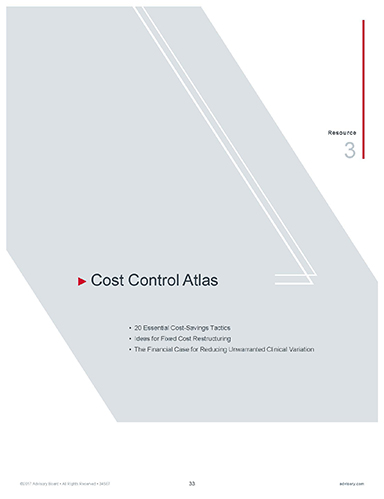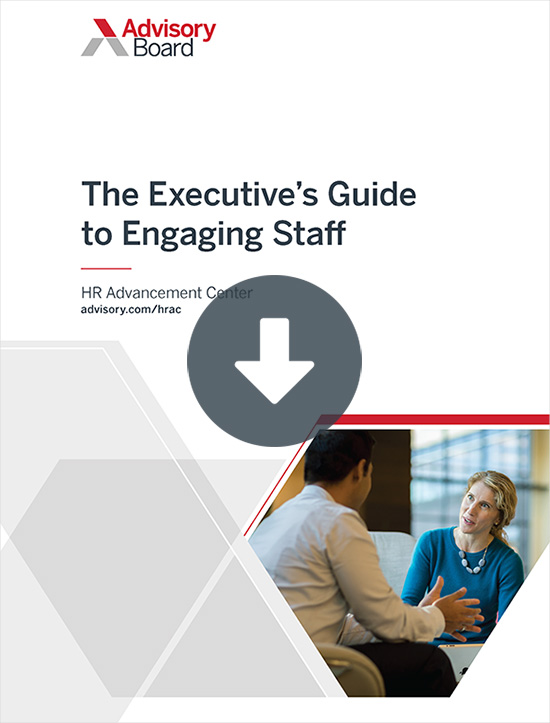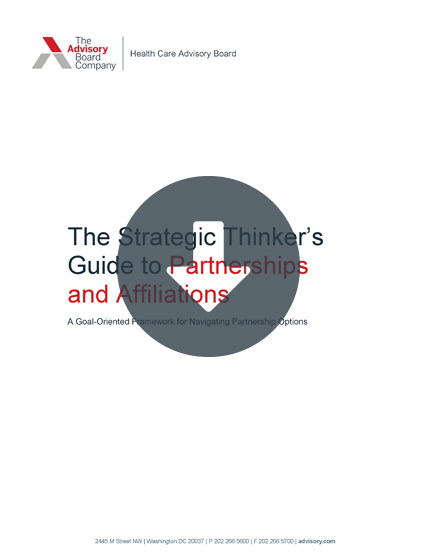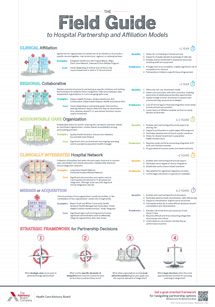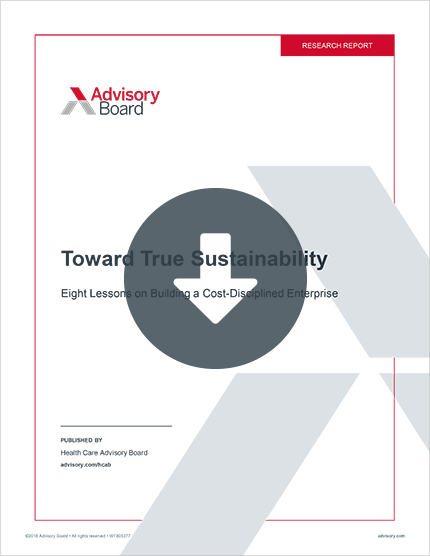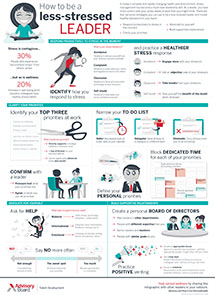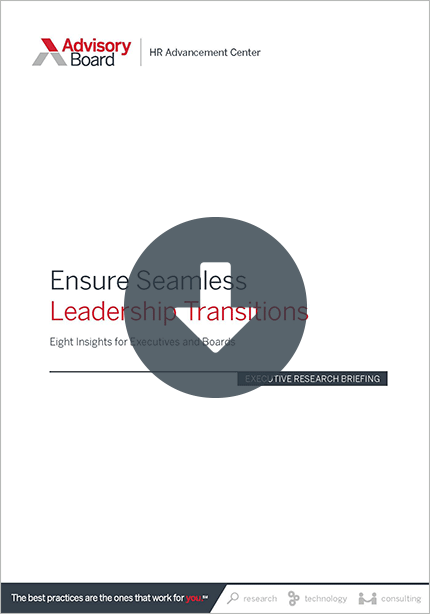Auto logout in seconds.
Continue LogoutWelcome to the "Lessons from the C-suite" series, featuring Managing Partner Eric Larsen's conversations with the most influential leaders in health care.
In this edition, Craig McNally, CEO and Managing Director of Sydney, Australia-based Ramsay Health Care, talks about Ramsay's first-of-its-kind partnership to create a global health care buying group with Ascension, the key distinctions between a multinational organization and a global one, and the lessons learned from his first stint as a hospital CEO—at age 25.
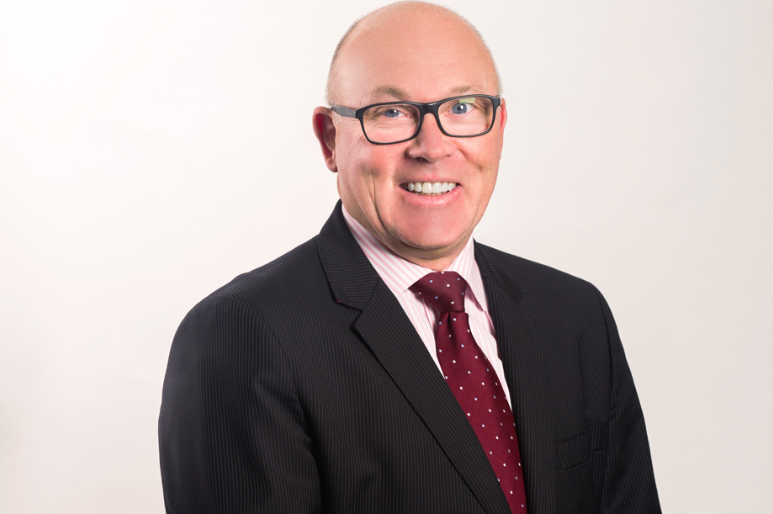
Craig McNally, CEO and managing director of Ramsay Health Care
Ramsay as one of the world's largest hospital operators
Question: Craig, before we start our discussion, I'd like to provide a bit of context for our readership, most of whom are focused on health care in the United States.
To me, Ramsay Health Care stands out as an exceptional example of principled—and sustainable—international health system growth. First founded by Paul Ramsay, the late billionaire and entrepreneur, as a small, private operator of hospitals in Australia in 1964, Ramsay Health Care has evolved into one of the largest hospital operators in the world with facilities in Australia, France, the United Kingdom, Italy, Indonesia, and Malaysia. And with your recent acquisition of the pan-European health care provider Capio, Ramsay now has 480 hospitals and healthcare facilities spanning 11 countries, treating over 8 million patients each year and employing over 77,000 staff.
With that backdrop, Craig, let's dive in. There aren't many truly global hospital companies that have sustained their success for multiple years, let alone for decades—and certainly not in such varied and heterogeneous countries, cultures, and regulatory environments. What makes Ramsay different?
Craig McNally: I think we have always had a clear mission and purpose—we manage hospitals and we do it well. Whether our hospitals are in Australia, France, the UK, or other regions, our management philosophy is the same. Appoint the right hospital management, ensure good engagement with staff and doctors, have strong clinical governance processes in place, and deliver excellent care to patients. The rest will follow.
In sticking to our core competencies of managing hospitals and continuously improving and reinvesting in our facilities, we have managed to sustain strong growth over many years.
Of course, to achieve this successful growth, we also took some risks, and having a founder and chair—in Paul Ramsay—who was willing to take these risks to grow the company, helped. We were a small hospital operator in Australian in the early nineties, when we took on two large and complex Department of Veterans' Affairs hospitals. This was a big stepping stone for the company and helped to reposition us into a significant hospital operator and gave us the confidence to us to go for other acquisitions.
Q: What was the tipping point for Ramsay in terms of "making it"? When did you realize Ramsay had a sustainable model in Australia, and what precipitated the move to expand internationally?
McNally: It was 2005; we were the No. 2 player in Australia, and we'd just made the acquisition of the No. 1 player, which had about 50 hospitals, and the competition regulator drew a line in the sand. The regulator forced us to divest 14 of those hospitals, and we ended up divesting 19 because we did some portfolio rationalization at the same time. But that was a real milestone for us, because we were now the No. 1 player in Australia, with over 70 facilities.
But the regulator said we couldn't grow any further by acquisition except in certain geographies, so we had to make a decision: Do we stay domestic and diversify into other health care businesses like pathology or imaging, or do we venture overseas? We made the latter decision, because, as I said earlier, our core competency was in operating hospitals and we were clear of our mission and purpose. We didn't have experience in operating pathology or imaging companies.
Q: Walk me through how your international acquisition strategy shaped up between that first decision to expand past Australian borders, and into the multi-national company Ramsay is today. What was your path through these overseas investments?
McNally: In that 2005 acquisition, we picked up three Indonesian hospitals, and we had to choose between divesting them—because we knew nothing about Indonesia—or holding on to them and learning about operating in an Asian environment. We decided on the latter. That was the moment when we decided, "OK, we're going to go overseas."
We went to the UK next because we had been keeping close to that market for a decade or more and, at that time, we believed the market was opening up for the private sector there. The UK government was introducing legislation launching "patient choice," where National Health Service (NHS) consumers could choose to go to a private operator or a public hospital. This was a landmark change which meant the private sector now had 100% of the population available as a potential market. So, we made our first UK acquisition in 2007. After a couple years of success there, we had the confidence to enter other markets and we made a couple acquisitions in France—one as a beachhead, then a bigger one in 2010. We made the significant acquisition of Générale de Santé in 2014.
Also, in 2014, we looked at our Indonesian business, and we found a significant outflow of Indonesians to Singapore and Malaysia. So, we spoke with operators in Malaysia about whether they saw a logic in connecting Indonesia and Malaysia, and one of them—Sime Darby—said yes, definitely. So we merged those two businesses, and thus we have six hospitals between Indonesia and Malaysia in a joint venture with Sime Darby.
Q: That's fascinating. But this growth path, as you've described it thus far, is still hospital-focused. Are you defining yourself as still primarily a hospital operator when you look ahead?
McNally: At the time, the point on strategy was we could see a long runway of hospital opportunity, so we didn't feel the need to divert from that. Of course, we had to do the analysis to pick out which markets to participate in, and which portfolios were most relevant to us, but it was still very much hospitals.
But the material runway starts to run out as you get bigger. So now, when we make a new material acquisition, we need to determine if we can provide additional shareholder and business value. Figuring out how we do that is a key part of our strategy going forward—that, and understanding we can't just be hospitals anymore—for a number of reasons. From the patient perspective, we need to have a foothold in non-hospital services, such as home-based and outpatient services, to streamlining the overall patient experience. And from a payer's perspective, we need to position ourselves so that we can deal with the pressures of pushing services down to the lowest-cost but still clinically appropriate environment.
That doesn't mean that we lose sight of our original core competency in operating hospitals. This is still the main game for us and we continue to improve on our model of running hospitals efficiently and effectively.
Ramsay as a global learning organization
Q: Paul Ramsay was an extraordinary person. I still hear Ramsay employees talk about him with genuine reverence and affection. Talk if you would about the culture he created.
McNally: It's really simple—as you mentioned, Eric, it absolutely goes back to Paul Ramsay, our founder. He had this ability to make you feel like you were the only person in the room. In the early days of the organization, he would show up at the hospitals and he knew everyone. He always listened to people—someone would catch him and say, "I’ve got this idea" and he'd say "Let's have a crack at it." He wanted to hear people's stories and didn't impose his own perspective or dominate the conversation. And while the success of the business was obviously important to him, he had this mantra of, "Look after the patients, look after the staff and the doctors, and the business will look after itself." We still live by that.
When we make an acquisition, culture is imperative to us. While we do plenty of business analysis—what investments need to be made, what our returns should be, how operationally efficient we can be—we also do a really good job of engaging with the people in the businesses and the markets that we move into. We talk about their financial performance and KPIs. But the main thing we talk about is what we're about—that we're here to give patients a great experience and ensure a high quality clinical outcome. If you don't start the conversation with that as a priority, then you can get off on the wrong foot, and people don't buy into why you're really there—and that's important regardless of the regulatory environment.
Q: That's an instructive point, because outside of HCA and a few other organizations here in the United States, multistate systems have experienced well-documented struggles. And navigating the regulatory vagaries from state to state is a lot easier than navigating the vagaries of, say, Kuala Lumpur, Paris, London and Stockholm. What is your advice here?
McNally: It sounds like an oversimplification, but you just need to do your homework—you need to know what the regulatory issues are, you need to know what is culturally appropriate. Just because something was successful in one region, we understand that it may not be wholly transferable to another. Ramsay recognizes that we don't have all the answers—what we do have is a good approach around communication and flexibility which allows local management to determine how our business can be successful in that region. We have a strong set of values and objectives, and we communicate those clearly, but we don't impose a view that just because we do it one way in Australia, you have to do it that way everywhere else.
Q: How do you balance the need to let each hospital be flexible and adaptable to local conditions with the broader goal of codifying and disseminating best practices as a global organization? That is, how does Ramsay as a whole become a learning organization across such varied environments?
McNally: It's a great question – no doubt it is difficult to be a learning organization, especially on a global scale. We try to put both formal and informal systems in place, because the best learning comes from informal conversations. But how do you scale those conversations for the 23 hospitals we've got in New South Wales? How then do you expand that to the 70-odd hospitals we've got in Australia? And how then do you expand that to the other 400-plus hospitals and facilities we have across the world? It's a really difficult exercise but you have to be committed to making it happen.
Formally, at a global and local level we have strong governance processes and organizational structures in place to ensure sharing at that level. But we also need people across the organization who want to share initiatives informally.
The leaders of our international branches have a passion about sharing best practice—they believe if we engage our people across the globe, then we're going to be a much better organization. So for me, a measure of success for that might be that the head of theaters in a French hospital can ring somebody in Australia to share the results of a fantastic initiative. We have activated some excellent clinical research programs and best practice quality initiatives across markets in this way.
Q: This is a great insight that has applicability for the States—the concept of a cross-pollinating, learning organization. The academic literature estimates that the identification of a best practice to its true adoption takes an average of 17 years; however, it sounds like this dissemination—and the speeding up of the process—is one of the signature characteristics of Ramsay.
McNally: It is certainly one of our top ambitions. And from my perspective, we haven't got there yet. At a high level, we probably have—the CEOs of countries will communicate, understand what big strategies they've got—but it really has to disseminate through the organization. Of course, it's something we at Ramsay think is a priority.
Acquisition and partnership strategy
Q: Another signature attribute of Ramsay is that a much of your M&A activity is structured as partnership—the Sime Darby partnership in Indonesia and Malaysia, the Générale de Santé partnership in France. Does this collaborative approach stem from what you said before—how you don't want to be autocratic saying, "Hey, this is the Australian way and therefore you have to accept it?"
McNally: Actually, we used to take a view that we needed to own 100% of the business so that it became part of the Ramsay family. But that just became impractical.
Q: How did Ramsay change course—from ownership to partnership?
McNally: It was serendipitous, really. The first partnership we had was in France with Predica, which is a subsidiary of the French bank, Crédit Agricole. A few months earlier, we'd had a board meeting where we identified France as our next market, and one of our criteria for that market entry was identifying a French partner, because a new market means a new culture. When Chris Rex (Ramsay's former CEO) and I met with some investment banks as part of that process, they said, "Oh, coincidentally, there's this opportunity with Predica to invest in a group of private clinics operated by Proclif." It was a tight timeframe—we had only six weeks to figure out the deal—but the stars were aligned, and we signed off just before midnight on New Year's Eve in Australia. We own 57% of Proclif, and Predica has 43%.
That was the first time we'd worked with somebody else at that scale, and it led to the 50/50 joint venture with Sime Darby. We partnered there because Sime Darby had three hospitals, we had three hospitals, and neither of us wanted to exit. Unlike the French partnership, this is a 50/50 joint venture, so we make all decisions down the middle. We've got to agree—no one has the right of veto—so it's a bit unusual, but it works.
Q: So it sounds as if acquisition is still one approach that Ramsay is willing to take. What factors are you weighing when thinking about acquisition versus partnership?
McNally: Yeah, that doesn't mean that owning 100% businesses isn't part of us as well. When we look at new markets, we'll continue to make assessments as to whether we would be comfortable adding value just as Ramsay, or whether it's a market where we'll need a local perspective. And size is a consideration as well—are there opportunities that are of such a scale that we wouldn't do them on our own?
Ascension partnership
Q: Ramsay and Ascension recently established a joint venture aimed at driving down supply costs—a "global health care buying group." I'd like to explore that, but first, can you provide some context on Ramsay's contract manufacturing and procurement capabilities? By all accounts, your supply chain process is among the best in the world for a health care organization.
McNally: When we went through all that growth by acquisition, including buying Australia's then-largest player in 2005, we found that we were burdened by all kinds of legacy operations. So we took four years just to understand what we bought, and that process put us in a better position to negotiate purchasing agreements with the suppliers for Australia.
That process of getting our own act together in-house gave us a better understanding of what was available in terms of cost reduction and better quality. We just understood our supply chain better. But that was before we had the international businesses at any scope.
Then, we began acquiring international businesses, each with their own procurement processes, and so again we said, "OK, let's understand what we buy as a global organization. And let's work out how we negotiate with supplies on a global scale, rather than market by market." And that led to the decision to set up a Ramsay International Purchasing Office (RIPO).
Q: How successful has this initiative been for Ramsay? Are you achieving what you want to achieve here yet?
McNally: It's early days. We didn't set out to change the world overnight. This is a long-term initiative with the an aim to bring innovation and efficiency to the system into the system as well as the discipline to form new more productive relationships with the vendor community so all can benefit.
Q: But that procurement is now a deep competency at Ramsay—if not relative to where you want it, at least relative to peers internationally. And this brings us full circle back to Ascension. Would you talk about that—how it was conceptualized, what the deal is, what is it seeking to do?
McNally: This partnership, which we started discussing about three years ago, provides us with the opportunity to share learnings, best practice, and industry knowledge and to seek improved quality and outcomes for patients whilst also reducing costs. We expect that as our joint venture evolves, we will create opportunities, designed by providers for providers, to improve financial and operating performance within our respective organizations as well as to provide an alternative supply chain source for other independent providers
Path to the C-suite
Q: I'd like to change course a bit, Craig, and reflect on your own path to the C-suite. By any measure, it has been an exceptional ride. You and your brother were the first in your family to attend university, and by the time you were 25, you were a hospital CEO. Tell me about this. How intentional was your path?
Craig McNally: Oh, I had no real plan; it was just what was in front of me. You know, I grew up in a working-class family in Sydney and it was great—I had my family, my friends, and sports. But most people left school at the age of 15, so my academic results were good relative to the rest of the school. My last year, I was athlete of the year and school captain (which is the U.S. equivalent of student body president) too. And there was a family expectation to go to university, especially with my brother getting into med school. Also, why wouldn't you want to go to university and enjoy the university life?
So I went to the University of New South Wales and originally intended to study electrical engineering. But about two weeks before university started, I realized that I didn’t want to be an engineer. It wasn’t me. So I looked through the course offerings and was intrigued by health administration. I liked the subject because it had some interesting academic things—a mix of law, epidemiology, health planning, whatever it may be—but it also gave you a lot of free time, which is great when you're 17, right?
After that, the next logical step for a health care career was a three-year executive training program at the College of Health Service Executives. They took five people from university every year, so I applied to that and got in. And during the last year of the program, you did "chief executive officer relief"—you'd basically fill in as a temporary CEO when the current executives went on holiday or took time off.
Q: Wait, interning as a CEO? That's totally different from here in the United States.
McNally: It was an overwhelming responsibility—but it gave you lots of insight into the operation of the hospital and the relationship you had with hospital boards. And you never got the big hospitals; these tended to be hospitals that were 150 beds or less.
Anyway, that year turned into two-and-a-half for me, just because I thought it was a ball. I got out there, I had lots of fun, met lots of people. But eventually, I was clogging up space for other people. So the guy who managed the executive training program pulled me inside and said, "Craig, you have to go get a job. You can't continue doing this." So I got a job as the CEO of an 60-bed hospital in the northern beaches of Sydney.
Q: So you're how old—25?—and you became a hospital CEO? Is that normal?
McNally: No, it's not normal. But it was a small hospital, and it was private—I was actually the first person in the history of the training program not to go to the public sector. The program was geared toward the public sector, but I couldn’t deal with all that; it's too bureaucratic and too constraining.
Q: That's not a bad start to your career. You worked there for a couple years until you made the shift to Ramsay. Could you talk about your career there? It seems your growth moved in lockstep with the rapid growth of Ramsay.
McNally: Well, without going into every step of my career with Ramsay, I moved around within the organization for a couple years—including a stint in London to start up our business there, and in the United States—before going back to Australia. I had the role of the surgical hospital division director, which morphed into a business development strategy role and eventually led to 22 years as Ramsay's chief of strategy.
And it was just a fantastic ride: Ramsay grew from 11 hospitals to 225 hospital over that time. It provided lots of opportunity for me personally—I also worked as chief operating officer, in addition to the strategy role, for about seven years—but also for everybody else in the group, because you didn't have to leave Ramsay to go and get a new experience. There was just something always around the corner.
Q: You've been Ramsay CEO about two years now, after you succeeded Chris Rex in 2017. Talk about that transition from COO/CSO to CEO. Was it a big difference in terms of responsibilities and perspective?
McNally: It was a big difference, because it's lonely at the top. While I had lots of responsibility as CSO and COO, there was always Chris—but when you're CEO, the buck stops with you. Now, you can use the board and the governors of the business as a sounding board, yeah, but how do you test decisions? You've got to have a certain confidence and, while I don't generally lack in confidence, having an outside perspective is really healthy. The question is, how do you get that as CEO? And that's something I'm still figuring out.
Q: I have a two-part question to close. First, what do you hope to leave as a legacy for Ramsay? And second—this is something I ask all your peers—what are you most grateful for as you look back over this remarkable career?
McNally: There are a few things I want to leave as a legacy when I retire. One is that the culture we've established—learning, respect, looking after each other, dealing with everyone in a professional way—continues. And second, I want the top 100 senior people in our organization believing that they're better working for Ramsay—for both their personal and professional development—than anywhere else.
I'm grateful that I found Ramsay or that Ramsay found me. You know, I got my 30th anniversary recognition at the Australian Management Conference a few weeks ago, and I told the 250 people in the room that my joining Ramsay—and Ramsay's path of growth and development—was one of the most opportune, but unplanned, things that occurred in my life. The anecdote I used was, "Be careful what you wish for." When I was in school, I thought, "Wouldn't it be fantastic to have a job where you got on a plane and traveled somewhere?" My first time on a plane was a "mystery flight"—a 45 minute ride to a town called Wagga Wagga, and when the plane landed, we walked around for a half hour at the airport and then flew back to Sydney. I just thought it was fantastic being on a plane and wanted a job where I had to do that regularly. So, be careful what you wish for!
I'm also grateful for Ramsay's international development. Whilst it's tasking from a time perspective, it's absolutely fantastic to experience and be involved in other systems; to see how people provide their services, what the structures are. So, from an intellectual point of view of health care provision, the day we decided to go international was a milestone.
Questions or comments about Lessons from the C-suite? Email Eric at larsene@advisory.com.
Learn more: View a snapshot of the leading global health systems
Our latest infographic provides a snapshot of global health care systems, highlighting progress towards care model and payment innovation on a country-specific basis.
Get more lessons from the C-suite
Check out Eric's recent must-read interviews with top hospital and health system leaders:
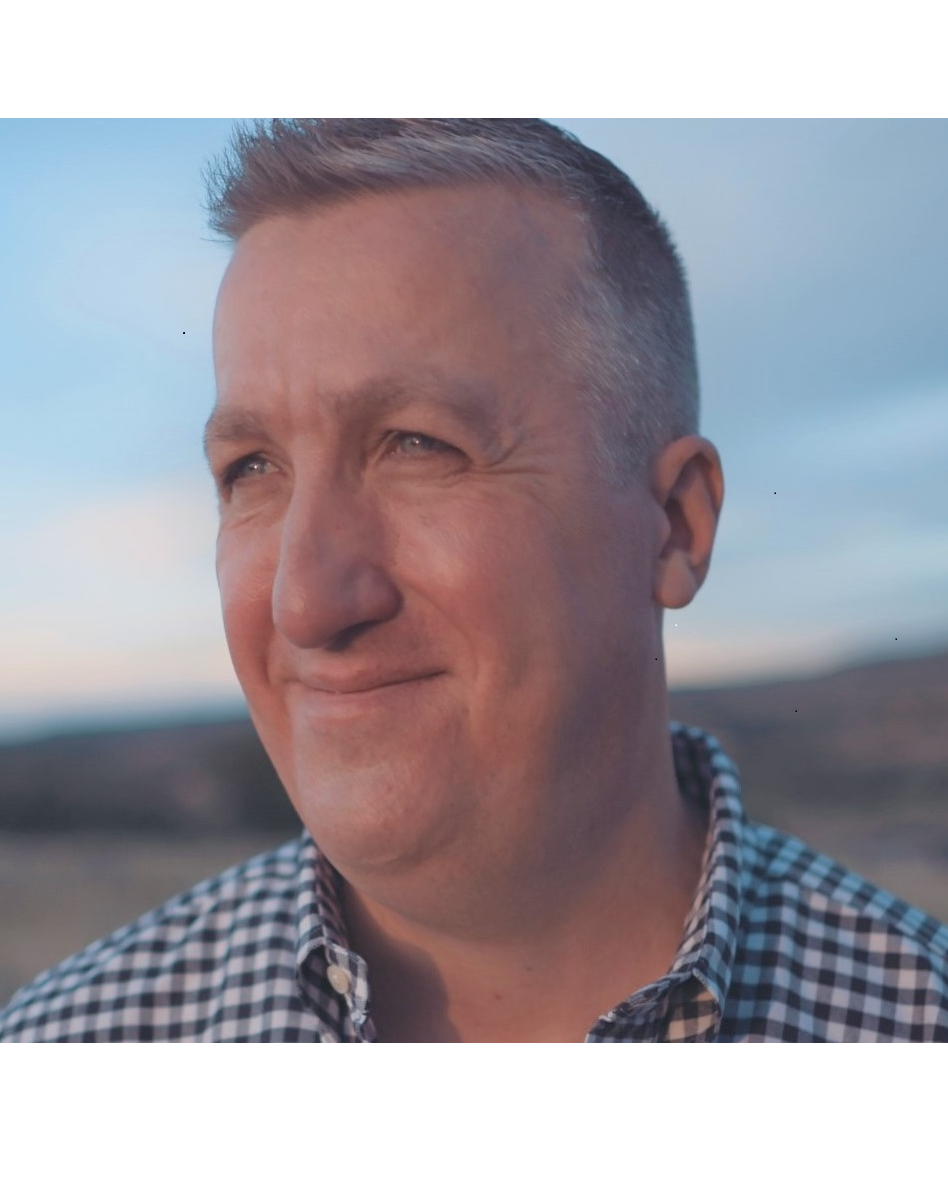 Meet Peter Banko, Centura Health's CEO. (You may also know him as a cattle rancher and bogger.)
Meet Peter Banko, Centura Health's CEO. (You may also know him as a cattle rancher and bogger.)
Peter D. Banko, president and CEO of Centura Health, talks about the intersection of faith and business, the relationship between his cattle ranch and his work, leadership lessons from the nuns who treated Billy the Kid, and why his blog is such an important communication tool for him. Read our interview with Peter.
Marc Harrison promised to turn Intermountain into a 'Tesla.' He wasn't kidding.
Marc Harrison, president and CEO of Intermountain Healthcare, talks about Intermountain's recently announced strategic reorganization, previews the launch of a ""virtual hospital"" to better serve rural communities, and shares the surprising worry that keeps him up at night. Read our interview with Marc.
From the seminary to the C-suite: How IU Health CEO Dennis Murphy is redefining the AMC
Dennis Murphy, president and CEO of IU Health, talks about his ""Forrest Gump"" journey from the seminary to the C-suite; IU Health's planned consolidation of two century-old, iconic hospitals; and the key skill every leader—and mentor—needs to succeed. Read our interview with Dennis.
"
Don't miss out on the latest Advisory Board insights
Create your free account to access 1 resource, including the latest research and webinars.
Want access without creating an account?
You have 1 free members-only resource remaining this month.
1 free members-only resources remaining
1 free members-only resources remaining
You've reached your limit of free insights
Become a member to access all of Advisory Board's resources, events, and experts
Never miss out on the latest innovative health care content tailored to you.
Benefits include:
You've reached your limit of free insights
Become a member to access all of Advisory Board's resources, events, and experts
Never miss out on the latest innovative health care content tailored to you.
Benefits include:
This content is available through your Curated Research partnership with Advisory Board. Click on ‘view this resource’ to read the full piece
Email ask@advisory.com to learn more
Click on ‘Become a Member’ to learn about the benefits of a Full-Access partnership with Advisory Board
Never miss out on the latest innovative health care content tailored to you.
Benefits Include:
This is for members only. Learn more.
Click on ‘Become a Member’ to learn about the benefits of a Full-Access partnership with Advisory Board
Never miss out on the latest innovative health care content tailored to you.

